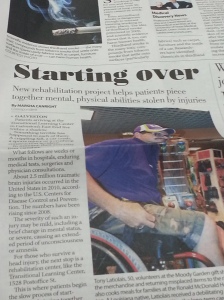It is common for brain injury survivors to suffer fatigue more acutely and to enter into states of fatigue more easily after their injuries. For many survivors and their family members, this increase in fatigue comes as a bit of a surprise. Why am I (or my loved one) exhausted by 6 p.m. when I (or my loved one) used to be active throughout the evening even after a long day of work?
Below are just a few of the reasons why brain injury survivors may be experiencing this greater post-injury fatigue:
1. Survivors may still be healing from the injury.
2. It often takes far more effort and concentration to engage in basic activities like walking and speaking than it did pre-injury.
3. Survivors are almost always operating under far greater levels of stress than before. This could be due to the inevitable stress of trying to get better or stress from other issues such as financial difficulties due to losing a job after an injury.
4. They may be experiencing significant post-injury pain and prolonged pain tends to contribute to fatigue.
5. The survivors’ medications may be causing fatigue.
6. The survivors may not be sleeping as well due to the injury. Many brain injury survivors experience significant changes to sleep patterns post-injury.
7. The survivors may be feeling depressed, anxious or angry. Any of these emotional states are conducive to greater fatigue.
8. They might still be getting used to the “rehab” or “post-injury” schedule, which may be quite different from their pre-injury schedules. For instance, a night shift worker may find that it takes some time to get used to the daytime hours of rehabilitation.
9. The greater fatigue may simply be part of the brain injury itself.
Depending on the cause of the fatigue effecting each individual survivor, brain injury professionals may manage given circumstances in very different ways. For instance, if it’s determined that a survivor is suffering fatigue due to depression, then the survivor would be encouraged to talk about those issues with a staff psychotherapist. If fatigue is most likely attributable to medication being taken, a staff doctor may make adjustments to those medications. If fatigue is due to to the added exertion of engaging in daily tasks, survivors may be encouraged to take appropriate rest breaks. In all cases, patience and understanding go a long way to helping the survivor cope with fatigue.
Learn about brain injury treatment services at the Transitional Learning Center: tlcrehab.org


